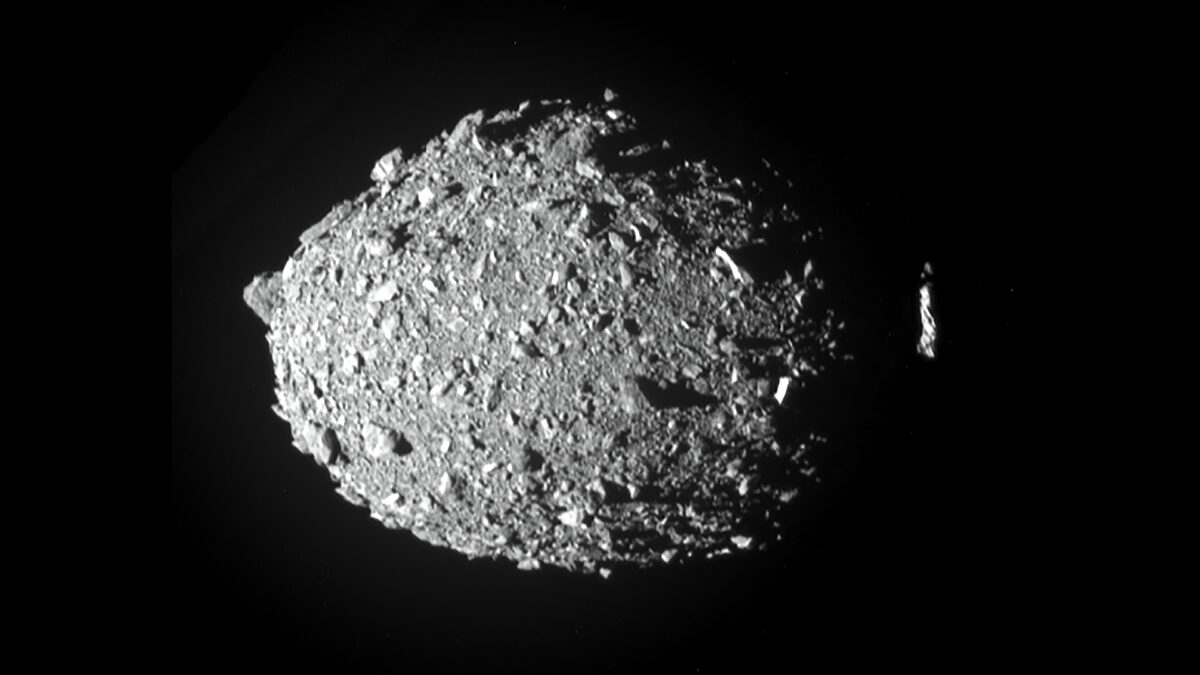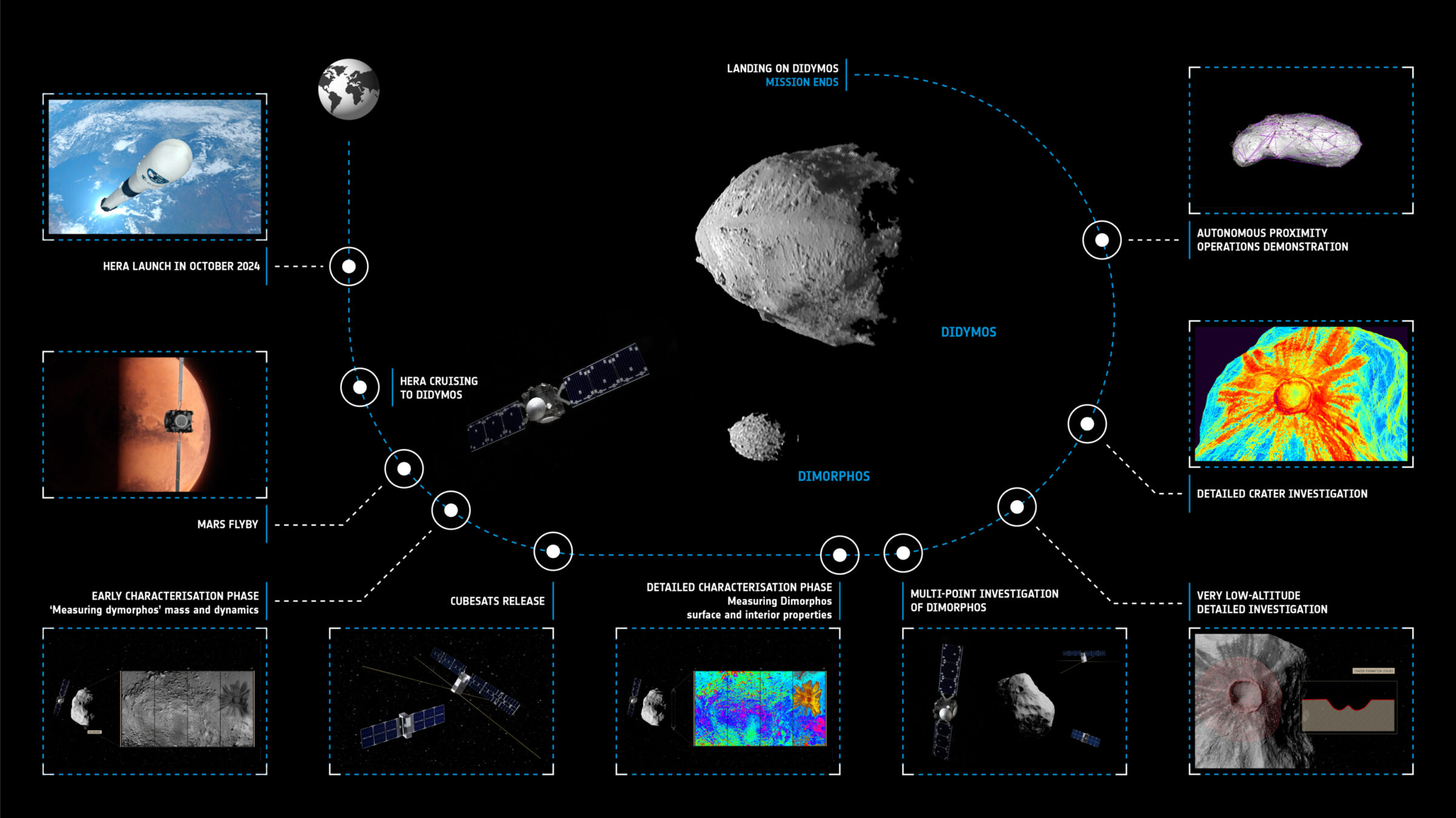Kate Howells • Sep 26, 2024
The Hera launch: What to expect
The European Space Agency (ESA) is preparing to launch a mission to study the aftermath of an intentional impact between a spacecraft and an asteroid.
The Hera mission is due to launch on Oct. 7, 2024, on a SpaceX Falcon 9 rocket from Cape Canaveral, Florida. Hera will travel to a binary near-Earth asteroid system – Didymos and its moonlet Dimorphos. In September 2022, NASA’s Double Asteroid Redirection Test (DART) mission intentionally crashed into Dimorphos and successfully changed its orbit around Didymos.

Hera will study Dimorphos to help scientists understand how DART reshaped its surface and altered its orbit. Visiting the asteroid post-impact will also allow Hera to study its subsurface and add to our understanding of asteroids throughout the Solar System.
Why Hera is important
Hera is ESA's contribution to an international planetary defense program called the Asteroid Impact and Deflection Assessment (AIDA) collaboration. This double-mission program includes DART as the first step, and Hera as the second.
The purpose of AIDA is to learn more about deflecting asteroids to prepare for a possible future scenario in which an asteroid is discovered on a collision course with Earth. By learning exactly what happens when we attempt to move an asteroid by crashing a spacecraft into it, we can refine this deflection technique and improve our odds of successfully moving a dangerous asteroid away from our planet in the future.
What Hera will do
After launching in October 2024, Hera will begin a two-year cruise phase. In March 2025, the spacecraft will make a flyby of Mars, using the planet’s gravity to adjust and speed up its trajectory toward Didymos and Dimorphos. Hera will use its science instruments to study Mars and the planet’s smaller moon Deimos as it passes by.

Once it arrives at the Didymos system, the Hera will enter into orbit around the pair of asteroids. The spacecraft will perform high-resolution visual, laser, and radio mapping of Dimorphos to build detailed maps of its surface and interior structure. The entire moonlet will be surveyed at a resolution of about a meter, with even higher resolution around the vicinity of the DART impact.
Hera will also measure Dimorphos’ mass and its orbit around Didymos, providing more detailed data about the aftermath of DART’s impact.
About six weeks after arriving at the target asteroids, Hera will deploy two CubeSats called Milani and Juventas. These CubeSats will help Hera measure the chemical makeup of Dimorphos’ surface and probe its subsurface.
Hera might end its mission by landing on Dimorphos, although this possibility is still under consideration by the mission team.

Bonus science
While Hera’s primary objective is to add to our understanding of the kinetic impactor asteroid deflection technique, its study of Dimorphos will yield some bonus science.
First of all, Hera will add to our understanding of asteroids in general. Unlike planets and moons, which have all changed since their formation, asteroids have mostly drifted through space since the early days of the Solar System, unchanged by tectonic or atmospheric activity. Therefore, they can serve as pristine records of the early Solar System.
By learning about all different kinds of asteroids, we can grow our understanding of the early conditions of the Solar System. Dimorphos will be the smallest asteroid ever visited by a spacecraft, potentially yielding new insights into this class of planetary bodies.
Hera will also teach us collision physics and cratering behavior, which have so far only been modeled and tested on very small scales on Earth. By learning more about how impacts actually work in space, Hera can shed light on how planetary bodies came together in the earliest stages of the Solar System’s history.
Support our core enterprises
Your support powers our mission to explore worlds, find life, and defend Earth. You make all the difference when you make a gift. Give today!
Donate

 Explore Worlds
Explore Worlds Find Life
Find Life Defend Earth
Defend Earth

